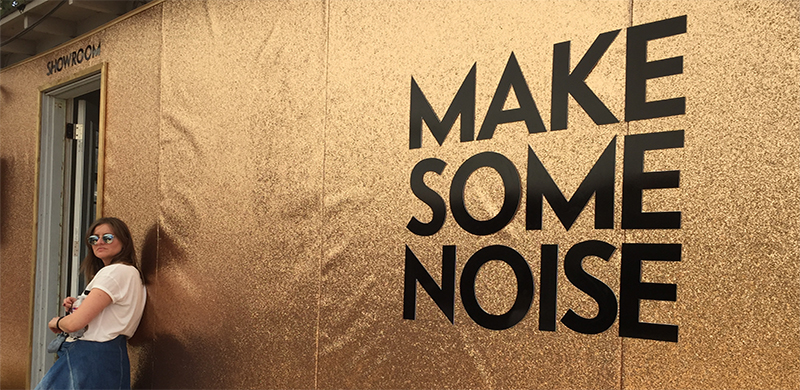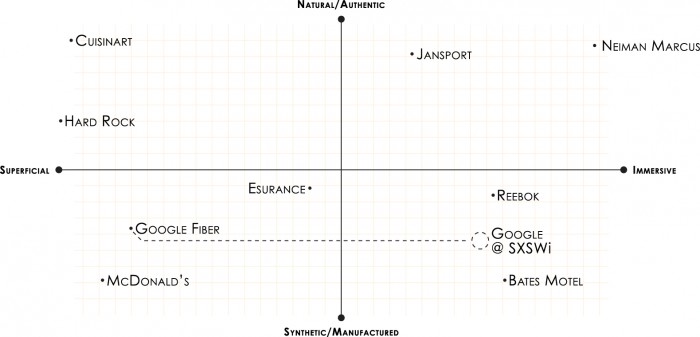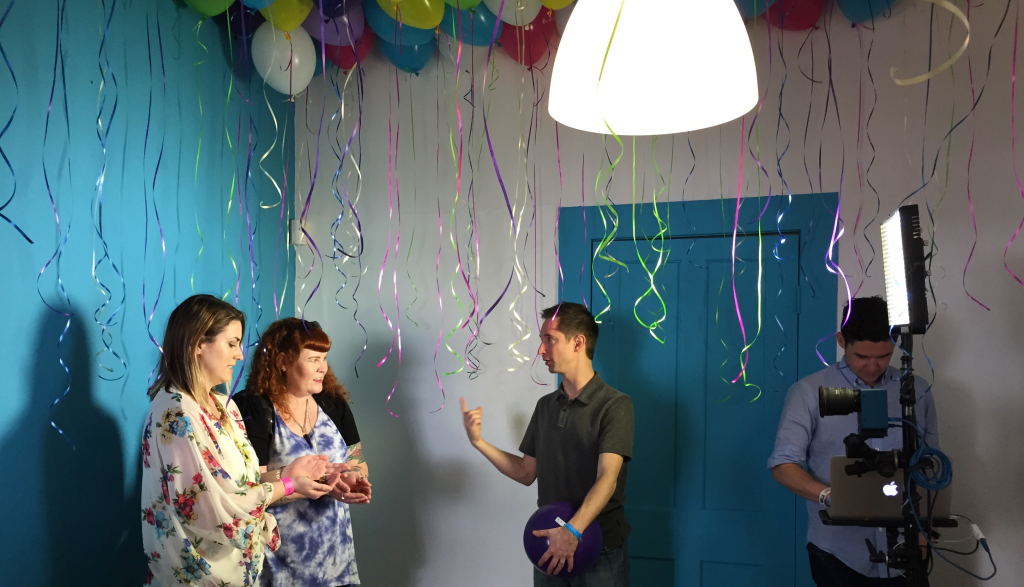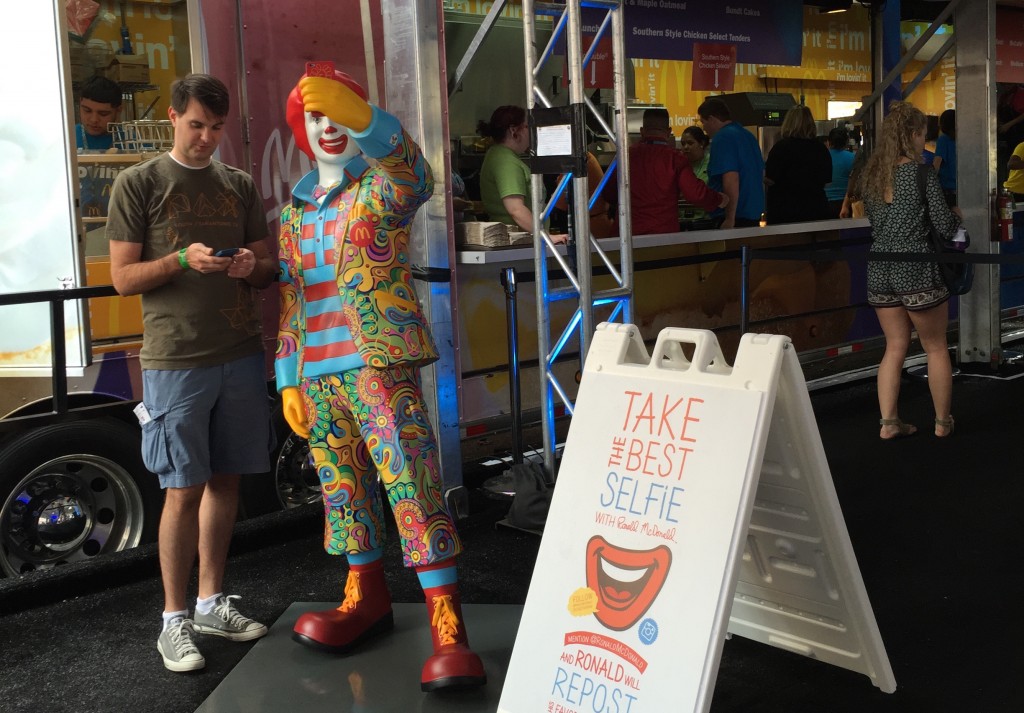When 700 people showed up at the first South by Southwest (SXSW) music fest in 1987, the organizers couldn’t believe their luck. They’d expected a waaay more modest turnout—150 at most. But those 700 registrants knew then what 51,000 know now: Austin’s eclectic music history and ready-to-party roots make it an ideal stage to showcase the newest and best bands, brands, films and tech.
This year, we sent a special-ops team of social, music and event marketing experts to experience and document how brands connect with social-era millennial consumers through experiential activations. Sure, we’ve set up our poster shop at big music festivals for nearly a decade. But this is the first year that selling gig posters wasn’t the main focus. We also analyzed the success and failure of some big-time brand activations.
To do that, we considered a few key questions:
- Was the experience natural and authentic?
- If it had multiple components, was it cohesive?
- Did we leave it on a positive note?
- Was it synthetic and overly manufactured?
- Was the effort superficial or immersive?
We threw together a quick matrix to visualize these factors. Here’s how a selection of our exhaustive list of brands fared:
The brands at the top right created an experience that felt like a holistic and a natural extension of the festival—while still exceeding the audience’s expectations. In contrast, there was nothing natural about the brands in the lower left, whose lackluster activations felt out-of-place, hollow, and disappointing.
Let’s break it down.
Neiman Marcus
Neiman Marcus flipped a house and hosted a party there called “Make Some Noise.” The house set the stage for a daytime speaker series starring Freida Pinto and Rosario Dawson, as well as a nightly Atlantic Records music showcase with headliners Jess Glynne and Clean Bandit. Their theme was all about empowering women, with each room featuring different cultural expressions from art to music to entertainment. Enthused brand ambassadors floated through the house in stylish frocks they selected from various new collections. They offered on-the-spot makeovers, encouraged payment in a quick-shop showroom, and guided visitors through engaging branded installations. Our favorite part was the slow-mo HD photo booth bursting with confetti and balloons.
Verdict: NM took the retail experience and created a fun, engaging, empowering party. Every element was different from the next, but all tied into the “Make Some Noise” theme.
Cuisinart
Cuisinart was overshadowed by the experience and undermined by the ambassadors. The brand partnered with Coolhaus, an architecturally-inspired gourmet ice cream shop, to rebrand one of their chrome trucks. The partnership made great sense, pairing brands that stand for culinary imagination and creativity, though they parked on the outskirts of the food truck zone. Cuisinart promoted their new ice cream maker by handing out ice cream sandwiches with branded edible wrappers. It was somewhat of a show-but-don’t-tell. The ice cream was great, though the engagement was minimal. One staff person encouraged people to tweet or Instagram a pic of the truck and tag Cuisinart for the chance to win an ice cream maker. Unfortunately, he didn’t explain the benefit of making the ice cream at home or why Cuisinart ice cream makers matter to us, their audience—only the activation rules were explained. However, it was delicious.
Verdict: No meaningful overlaps between what Cuisinart believes in and what their audience cares about. In short, no performance, all props.
Jansport
Jansport’s Bonfire Sessions party was part of a larger nationwide series. The brand set up an indoor/outdoor venue with picnic tables and an artificial bonfire. There were drinks at the bar and s’mores on the grill, and that alone won some hearts. Jansport handed out their latest backpacks filled with earplugs and light-up keychains—all essentials that keep SXSW-ers packed and prepped for the long festival days and nights. The overall vibe was laid back and fun. Exactly like a bonfire with old friends.
Verdict: Natural and engaging.
McDonald’s
For all the fire and effort in McDonald’s millennial push, it didn’t make an effort to engage the very Millennial festival-goers at SXSW beyond their primal needs. When attendees take the time out of their busy agendas to engage with brand experiences, they expect something in return. McDonald’s went the give-me-a-burger-with-extra-cheese-and-hold-the-experience route. People stopped in to grab some gratis Double Pounders and charge their phones. End of transaction. A few bands played in the afternoon, but the crowd was more focused on the fries and charging stations.
Verdict: Superficial and synthetic. They spent so much, but achieved so little—and they needed to achieve big, especially in light of how much better competitor Taco Bell did it.
Hard Rock
Hard Rock is making a push to attract younger diners. As part of that initiative, they’re sponsoring music festivals and other events geared towards younger crowds. The restaurant chain hosted an indoor/outdoor music showcase on historic Rainey Street, featuring upbeat indie bands. They built a VIP access area with shipping containers, effectively making the most appealing part of the experience exclusionary. No ambassadors were on hand. No Hard Rock info could be found outside of wall branding. And when we think Hard Rock, we think hard rock. Not indie pop.
Verdict: Superficial, with a hint of desperation.
Google Fiber
Google’s Fiber-driven lounge was a hit during SXSW Interactive. But come Music week, it fell flat on its behind—much like the brand ambassador, who couldn’t seem to muster up the energy to meet, greet, or explain what the (lack of) hype was all about. Even the band seemed bored. There was no outdoor promotion and the large, empty tent space had a somber vibe. We felt like we were transported to the backstage of a Kenny G concert. When local bands weren’t playing, visitors could learn about Google Fiber through interactive displays. The team did score some smartphone-ready 3D viewers though.
Verdict: One of our crew thought Google’s activation was immersive, yet awkward in its approach. Another thought the experience was just plain uninspired—likely due to the staffing issue.
Reebok
Reebok staged a gamification activity pushing the new Reebok Pump shoes. Fans lined up in droves to push a giant “Pump” button for the chance to open the doors to a Reebok store, where they could grab a new pair of kicks. Prizes flashed on the screen as they pumped. Each player had three chances to score their desired prize, yet risked being eliminated immediately if they landed on the Whammy. Every 30 minutes or so, the game would pause and the new Pump ad would play for the masses. The crowd remained very engaged, especially when contestants faced do-or-die decisions to go big or go home. The emcee kept everyone entertained.
Verdict: Very immersive. Felt overly branded, but we were willing to put up with it because they were giving out shoes. We would have liked to see more opportunities for participation, given the seemingly endless line.
Bates Motel
Would you stay at the Bates Motel? A&E thinks so, since they built their own, complete with 4 replica rooms, a front desk, and a flickering vacancy sign—all to promote their new show based on the motel from Psycho. It was one of the most immersive experiences at SXSW. When we walked in, a creepy front desk clerk greeted us. He checked us into the motel via email for a chance to win a one-night stay and handed us Bates Motel flyers. We even received a hotel key, complete with bottle opener and room number.
Verdict: Clever and engaging. They could have taken it a step further, since Norman was nowhere to be found. Everyone wanted to check it out.
Afterthoughts
Even after the close of South by Southwest, the smart, bold, and tirelessly creative brands remain on our minds. They understood how their communities want to be engaged, and seamlessly wove native and immersive experiences in the festival culture. They absolutely considered the personal and cultural expectations of the festival.
They offered the grander experience, aligning their brand’s “say” and “do” seamlessly with the “say” and “do” of SXSW. It is mandatory in the Social Era that brands deliver on their promises. And the user experience in the world is more important than the computer screen. Jansport’s Bonfire made perfect sense. Reebook understood what people want. Neiman Marcus thought three or four steps ahead of the visitor. And when visitor became creator, new advocates were born. Us included.
3 Things to Remember
Planning and executing a flawless experiential event can be a serious challenge. Just remember to offer:
- The “right” level of engagement—not too strong, but not nonexistent
- Immediate fulfillment
- Experiences to match the audience’s lifestyle





